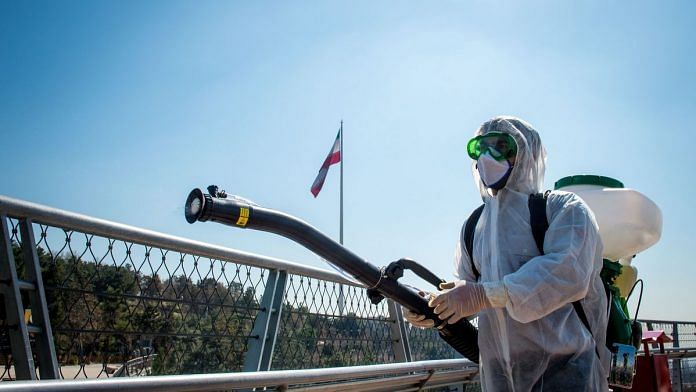New Delhi: In Iran, 17.1 per cent people might have got infected with the SARS-CoV-2 virus in the first wave of infections, according to the largest seroprevalence study in the region.
The study, published in The Lancet Infectious Diseases journal Wednesday, revealed that an estimated 4.3 million (or 43 lakh) people across 18 cities in Iran were most probably infected by the virus by April end.
However, till November, only 8,00,000 cases were confirmed in Iran.
Seroprevalence describes the overall proportion of people with antibodies of a virus in their blood. Seroprevalence surveys give an estimate of the true rate of infection and may also indicate the portion of the population that could be immune to the virus.
However, it is important to note that the degree of protection that antibodies provide against Covid-19 is still not well understood, especially since cases of re-infection have already been confirmed globally.
The Iran study also noted that the country’s seroprevalence rate is higher than that of Switzerland and Spain, and also New York and Los Angeles in the US.
According to them, this could be because Iran was among the first countries that reported the SARS-CoV-2 epidemic. As a result, a higher proportion of the population was possibly exposed to the virus.
“We have found that although the overall rate of infection is higher in Iran than anticipated, it is still less than one-fifth of the population, indicating that much of the country is still vulnerable to SARS-CoV-2 infection,” Reza Malekzadeh, lead author from Tehran University of Medical Sciences, Iran, said in a statement.
“We believe that antibody testing of individuals — including those in occupations at high-risk — should guide local public health decision making on lockdowns, PPE requirements and return-to-work policies,” Malekzadeh added.
The research is the first major seroprevalence study from the Middle East.
Also read: Moderna Covid vaccine found safe & effective before key review by US FDA
20% seroprevalence in high-risk populations
After China, Iran was one of the first countries to be hit by the Covid-19 pandemic, with the first death reported in February this year.
The data for the seroprevalence study was collected between 17 April and 2 June. It included people from the general population as well as those in occupations with higher potential for exposure, such as supermarket cashiers, bank tellers and healthcare workers.
Blood samples were taken from 8,902 participants and their serum was tested for SARS-CoV-2 antibodies. As many as 5,372 participants were from occupations with high risk of exposure to SARS-CoV-2.
The study found that seroprevalence in the high risk population was 20 per cent.
The researchers also found that seroprevalence positive rates were more than twice (30.8 per cent) in patients who reported that they had been in contact with a Covid-positive patient compared to those with no contact (14 per cent).
Also read: How to ensure smooth Covid vaccine rollout — India’s polio programme has some lessons






